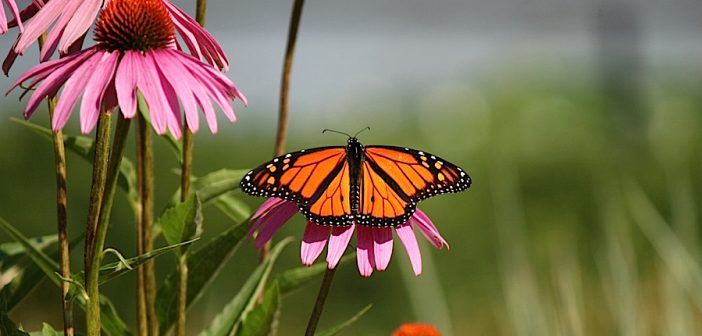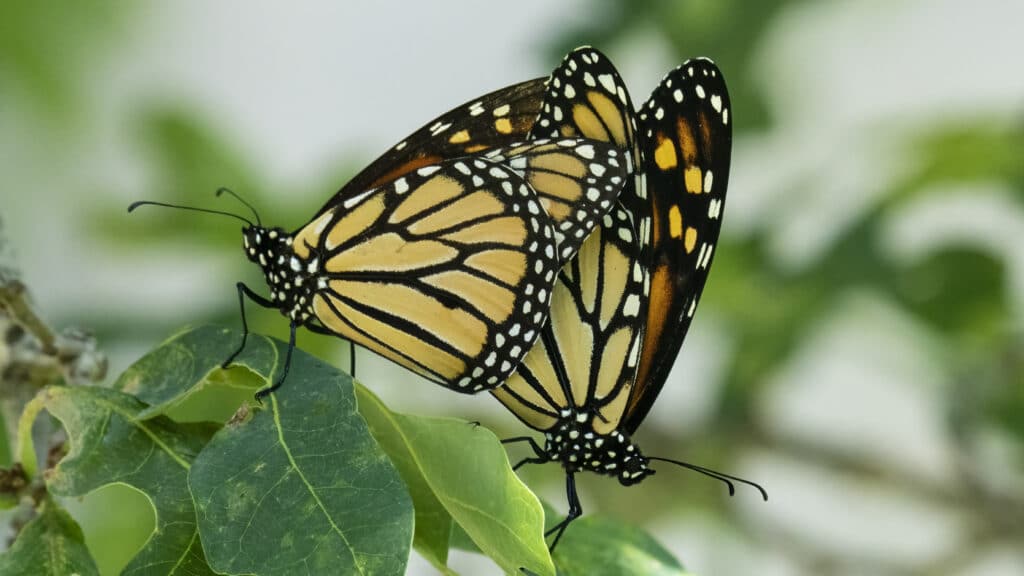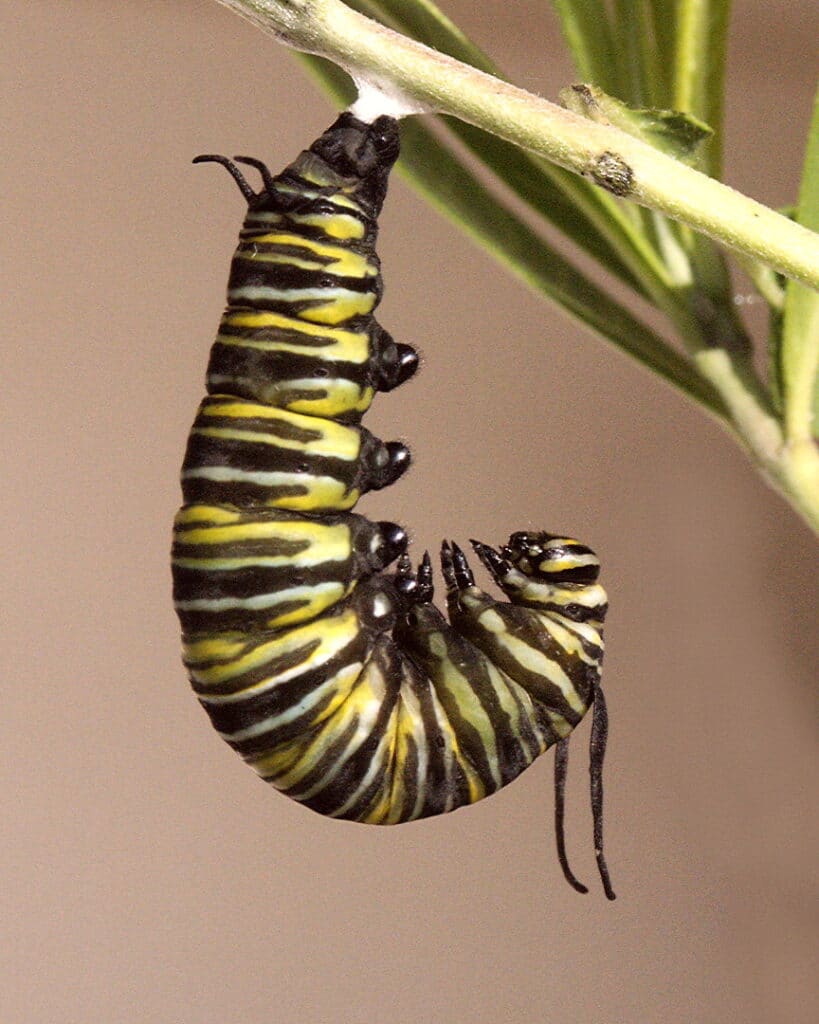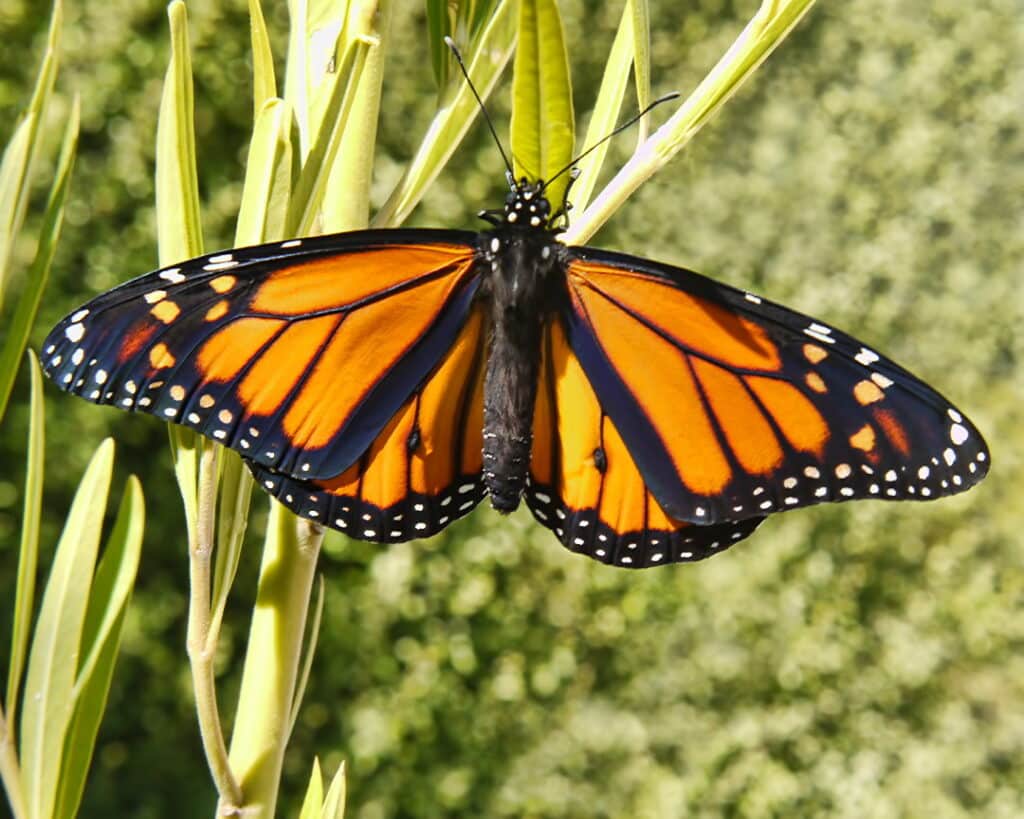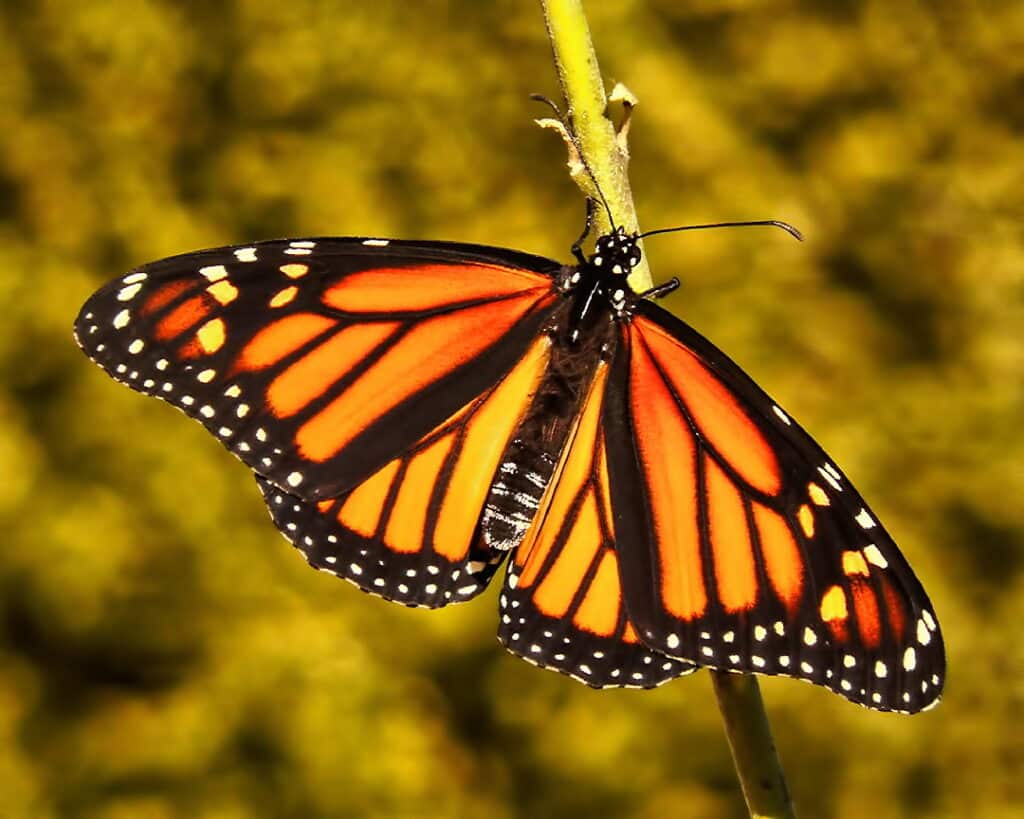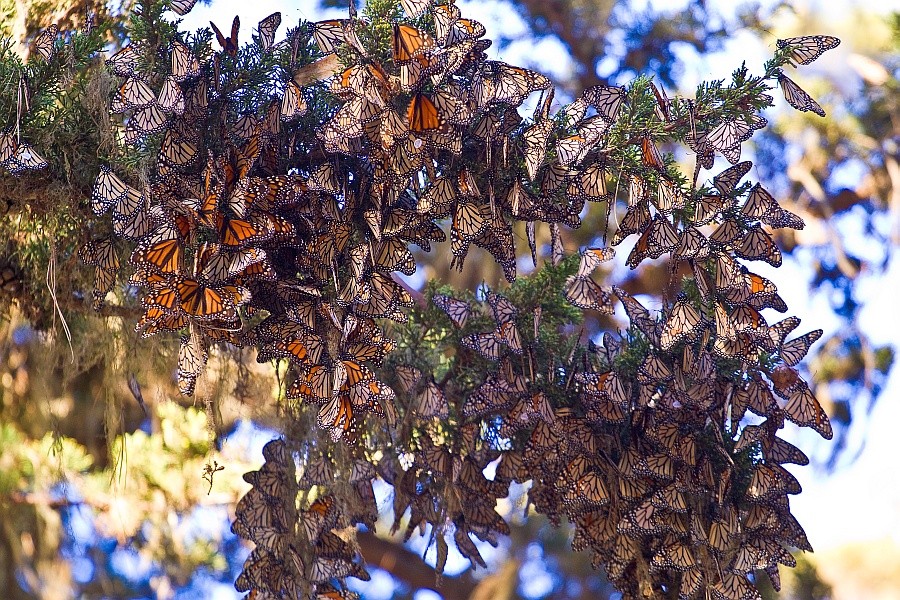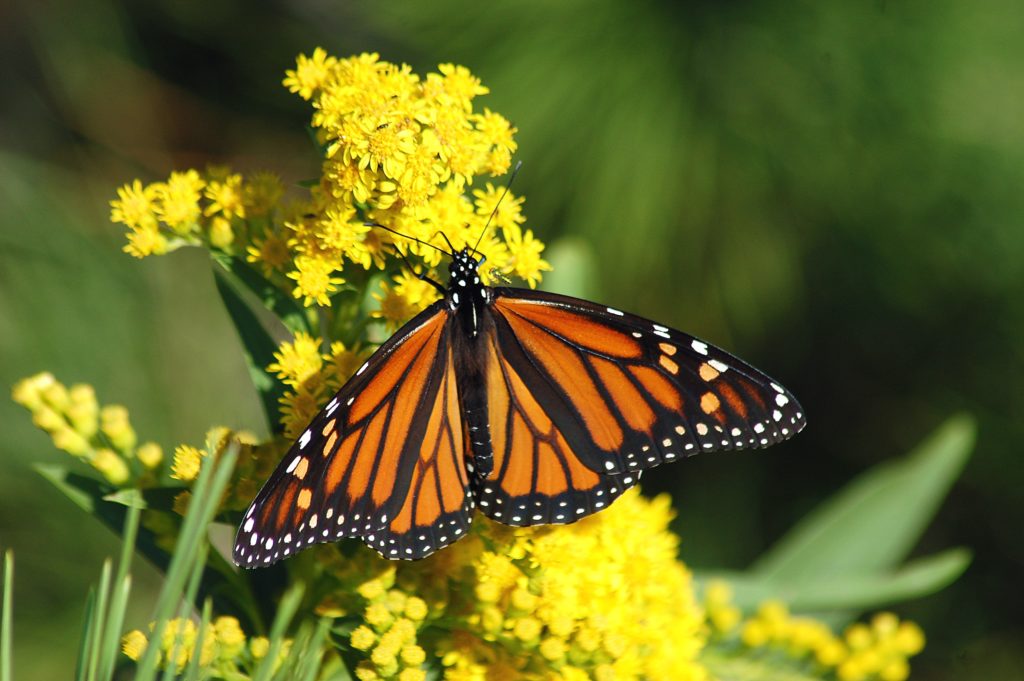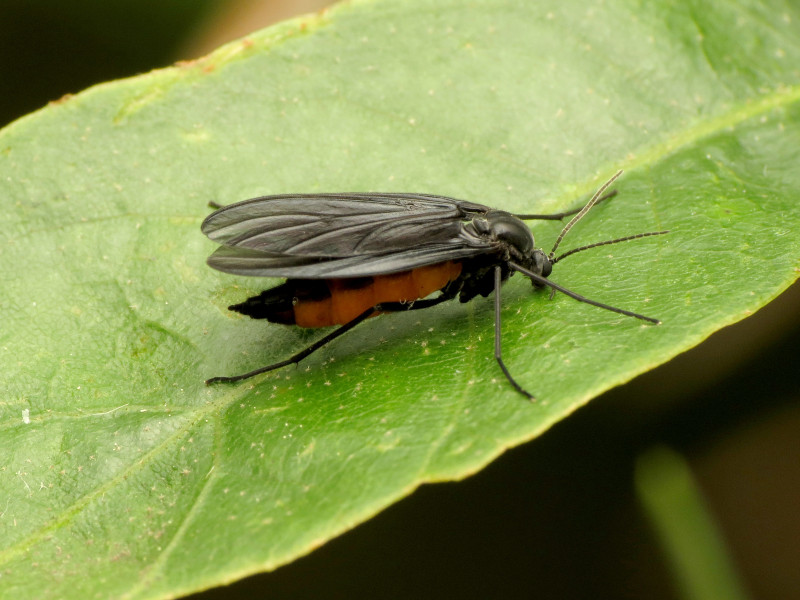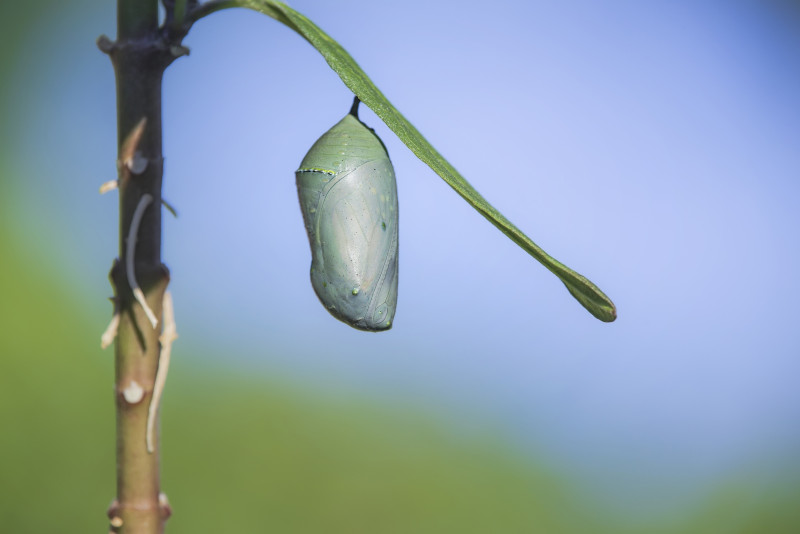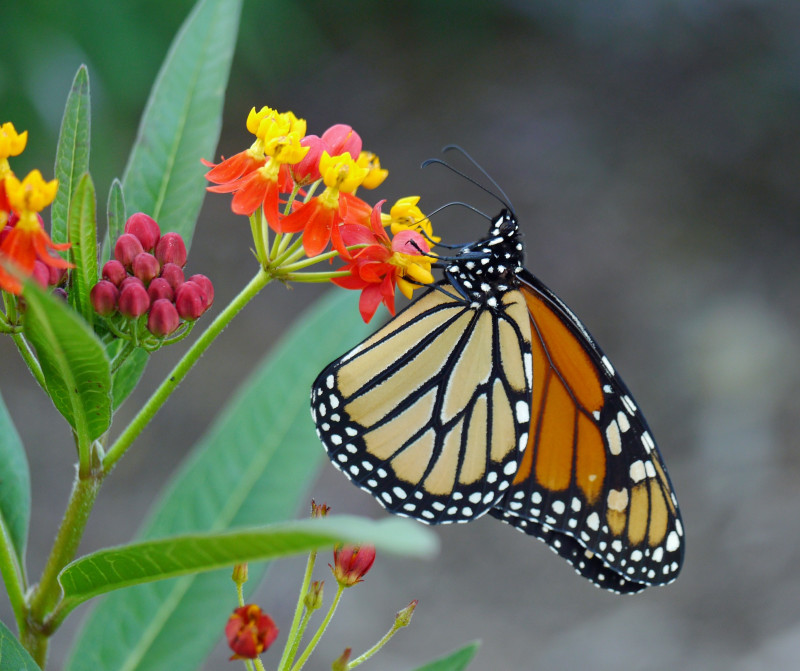Renowned for their beauty, grace, and fascinating migrations, Monarch Butterflies, Danaus plexippus, are probably the most-loved butterflies in America. Here’s their story: from an egg not much larger than the period at the end of this sentence, they evolve like magic into adults weighing only 0.02 ounces (0.75 g) but capable of flying hundreds of miles!
Egg stage
After mating, a female clings to the leaf of a milkweed plant (and only a milkweed) and curls her body to deposit an egg on the underside. She lays her eggs one at a time and on many different plants, so they’ll have a better chance of escaping the sharp eyes of predators. The eggs, which measure about 0.05 x 0.03 inches (1.2 x 0.9 mm), are sticky and stay attached. They will hatch in five to ten days.
Caterpillar (larva) stage
After hatching, their first meal is usually their eggshell, rich in protein. Caterpillars periodically rest, but otherwise, it’s all about eating, eating, eating to store up fat and proteins for their later metamorphosis into adult butterflies.
As they grow larger, they outgrow their skin and shed it several times in a process called molting. They usually go through five or six molts. There’s a term for the stages between each molt: instar. Between hatching and the first molt, the caterpillar is considered a first instar. Between the first and second molt, it’s a second instar, and so on. A first instar is 0.078–0.24 inches (2.0–6.0 mm) long and 0.02–0.06 inches (0.5–1.5 mm) wide. By its fifth instar, it’s 1.0–1.77 inches (25.0–45 mm) long and 0.2–0.3 inches (5.0–8 mm) wide and weighs 2,000 times more than it did as a first instar!
Pupa stage
When a caterpillar is ready to pupate, it moves a few feet off the plant and attaches itself to something stable from which to hang. This might be the stem of a neighboring plant, a twig, the lip of a flowerpot, or even the underside of a deck chair! Then, with secretions from its mouth, it deposits a sticky silk pad to hang from, attaches its hindmost pair of prolegs, and takes on a characteristic “J” shape.
The prolegs are the caterpillar’s stubby, fleshy legs with rounded black feet that you can easily see below. They’re used to cling to plants and other surfaces. Prolegs are temporary and disappear altogether during pupation.
Now, hanging head-down, it sheds its skin for the last time, and it isn’t recognizable as a caterpillar or a butterfly. The skin on its back splits open, revealing the underlying green skin, which will become its chrysalis (often called, inaccurately, a cocoon.) The old skin (the black-striped part) is being crushed upward as the caterpillar wiggles its body free of it. Ultimately, the old skin will be just a small dark, dry wad with the chrysalis hanging below and will fall off.
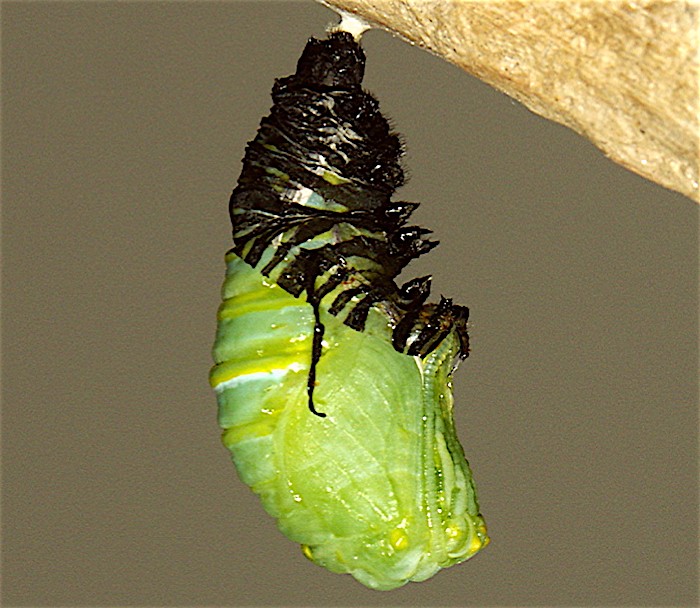
Monarch molting for the last time as it hangs from a sticky silk pad (Sid Mosell / Flickr; CC BY 2.0)
Chrysalis
Within the chrysalis, the caterpillar undergoes a process that converts its body into a head, eyes, internal organs, wings, and all the other body parts that constitute an adult butterfly. The chrysalis is extremely delicate. If it falls, the butterfly will die. Even if no obvious harm comes to them, Monarch pupae have a high mortality rate for unknown reasons. What goes on inside the chrysalis
The metamorphosis takes about ten to fourteen days. As the caterpillar develops into a butterfly, little by little, the shape of its body and tightly folded wings can be seen inside the chrysalis.
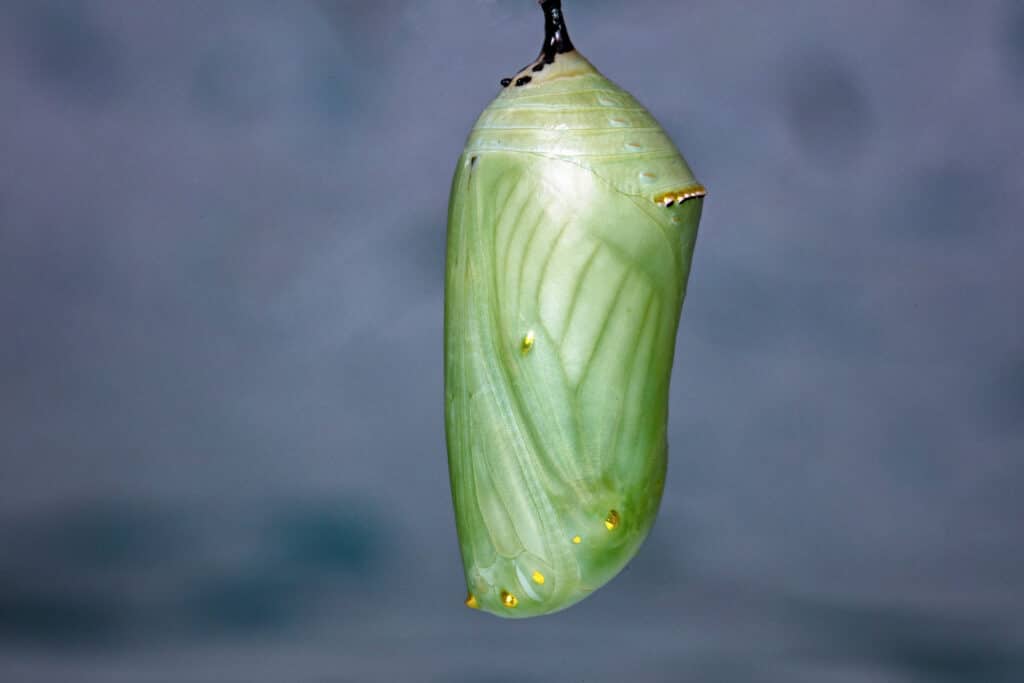
The pattern on the pupa’s folded wings can be seen through the semi-transparent shell. (Lorie Shaull / Flickr; CC BY 2.0)
Emerging as an adult
Below is a Monarch emerging (eclosing) as an adult and clinging to its chrysalis. Notice that its wings are all crinkled and floppy. They’re also wet. But they slowly take shape as the butterfly inflates them with liquid drawn from its abdomen. This gives them form and, once they’re dry, the rigidity necessary for flight.
If anything interferes with this process or causes the wings to become misshapen before they dry, the butterfly will be partially or wholly crippled. If it can’t fly, it’ll starve to death.
Visible difference between males and females
Unlike many butterfly species, there’s an easy way to distinguish a male Monarch from a female: Females have heavier veins in their wings, and they lack two small, black marks that are on the hindwings of males.
Adult stage
Monarchs live two to six weeks, spending most of the time mating and laying eggs. The last generation of the season emerges in late summer and early fall. They’re the ones that migrate south to overwinter in Mexico. An exception is the population of Monarchs that inhabit western states and migrate to California.
Overwintering Monarchs live eight or nine months, long enough to begin their migration northward and produce the first spring generation.
Pop quiz: Is this Monarch a male or female?*
Environmental threats to Monarchs
Monarch Butterflies are under threat of extinction. There are several reasons. Probably the most significant concern is milkweed plants. Monarchs lay their eggs only on milkweeds, and that’s what their caterpillars eat. The number of milkweeds, however, is steadily decreasing because of genetically engineered crops, principally corn and soybeans, that can withstand being sprayed by a potent herbicide called Round-Up.
Farmers used to kill weeds on their croplands by tilling between rows to chop them up, then turning them into the soil. Invariably, some milkweeds survived the process, and croplands used to be significant habitats for the plants. But now, entire fields can be sprayed with Round-up to kill all weeds without harming the crops.
Monarchs face other threats, too, including insecticide use in yards and gardens, illegal deforestation in their winter sanctuaries, inclement weather, and possibly climate change.
We may not be able to control these harmful factors as individuals, but we can play a role in helping Monarchs simply by planting as many milkweed plants as possible and avoiding the use of insecticides.
**A female.
Beautiful National Geographic video of Monarchs
Visit Monarchwatch.org for in-depth information about the Monarch

